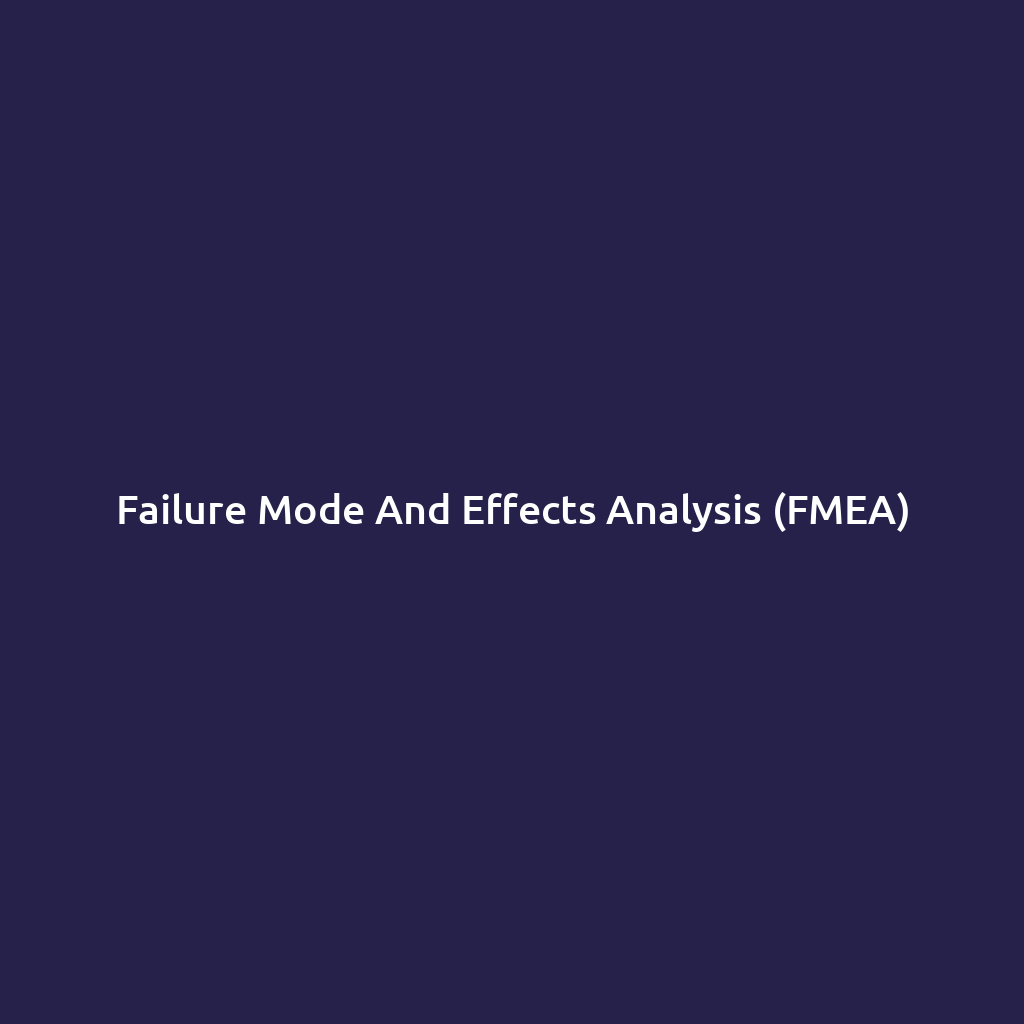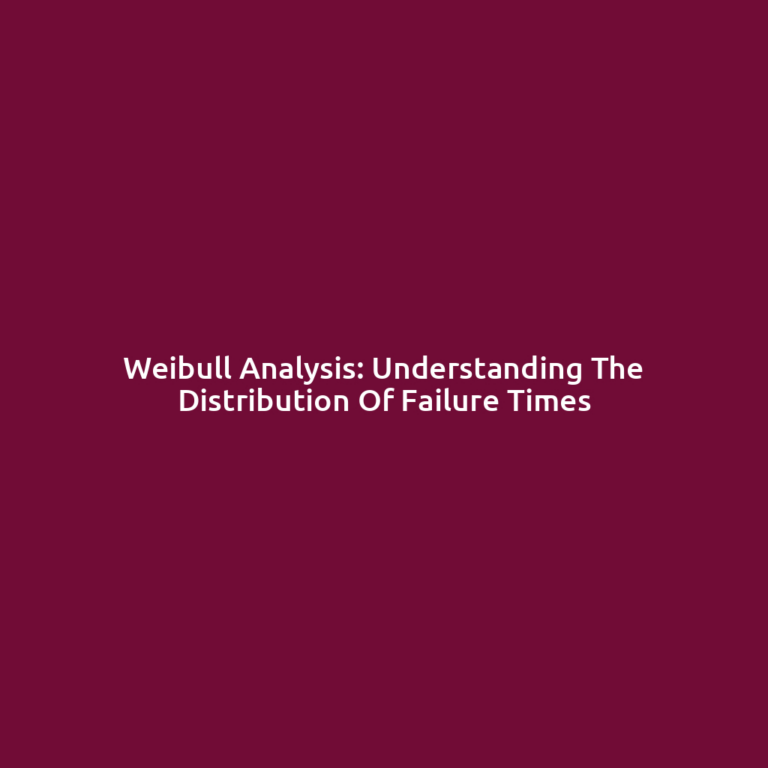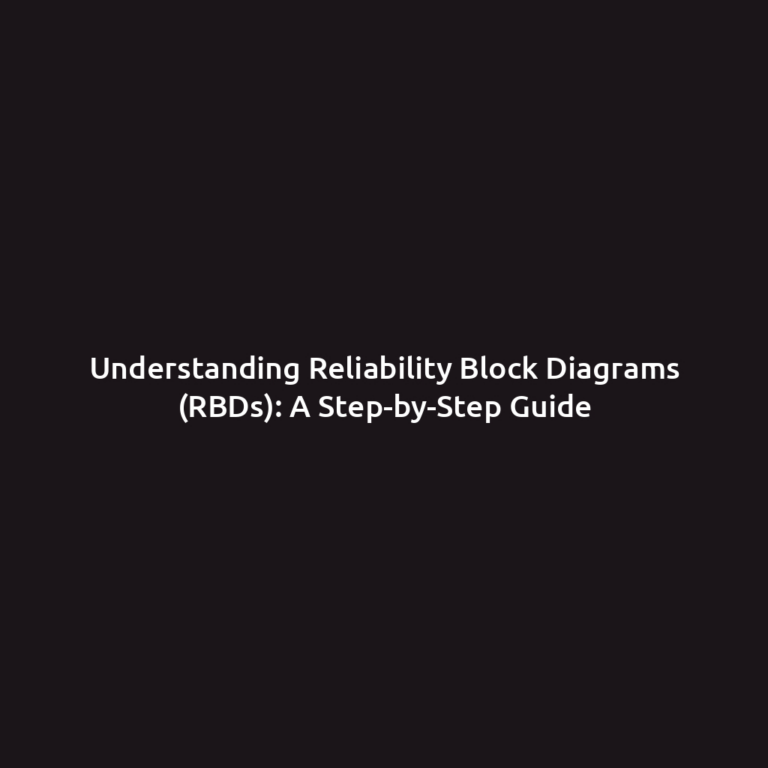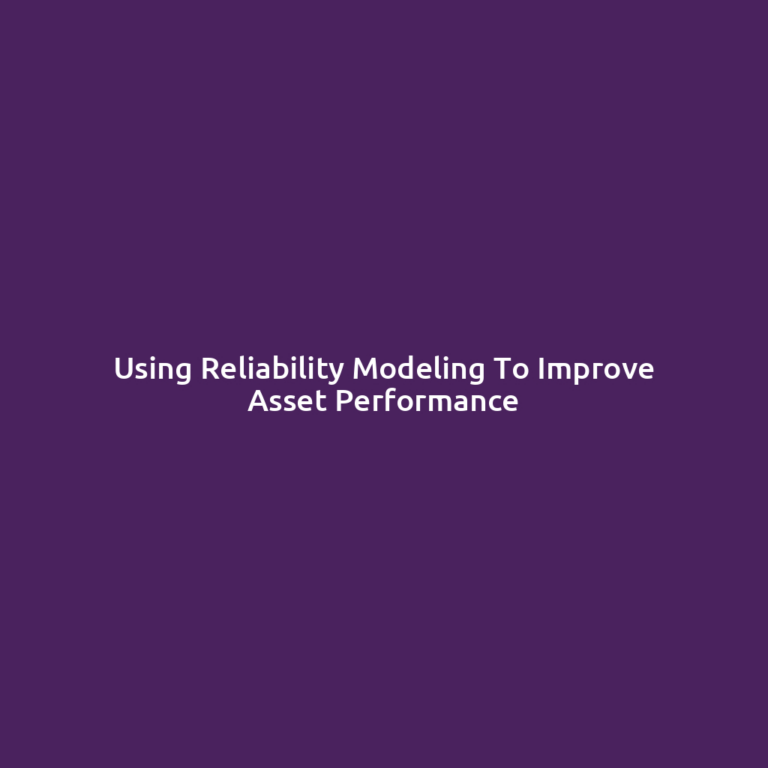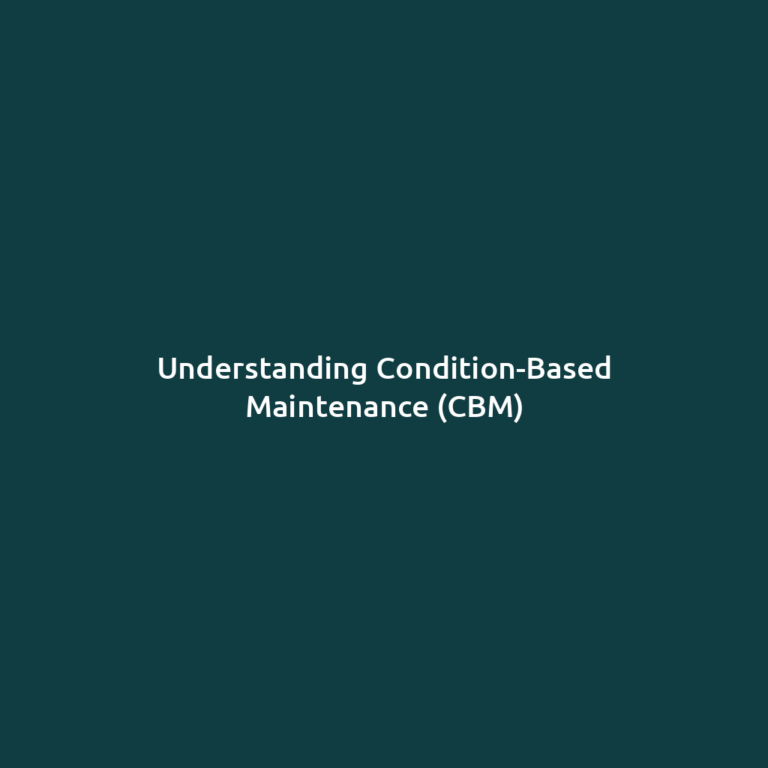Failure Mode and Effects Analysis (FMEA): A Reliability Engineer’s Best Friend
Failure Mode and Effects Analysis is a reliability engineer’s best friend when it comes to identifying potential weaknesses in a system before they cause costly failures. Picture this: you’re managing a project involving a complex machine and everything seems to be running smoothly. But what if one unnoticed flaw triggers a cascade of failures? This is where Failure Mode and Effects Analysis shines, acting as a predictive tool that ensures reliability and mitigates risks.
Failure Mode and Effects Analysis, often abbreviated as FMEA, is a systematic method used to evaluate processes, designs or systems for potential failure points.
By examining each component or step, reliability engineers can determine what could go wrong, why it might happen and the potential impact of the failure. This proactive approach is invaluable in industries like aerospace, automotive and healthcare where reliability is critical.
Table of Contents
- 1 Key Components of Failure Mode and Effects Analysis
- 2 Why Every Reliability Engineer Needs Failure Mode and Effects Analysis
- 3 How to Conduct a Failure Mode and Effects Analysis
- 4 Common Pitfalls in Failure Mode and Effects Analysis
- 5 Best Practices for Effective FMEA
- 6 Frequently Asked Questions About Failure Mode and Effects Analysis
Key Components of Failure Mode and Effects Analysis
FMEA revolves around three core elements:
-
Failure Mode: This identifies how a component or system could fail.
-
Effect Analysis: This evaluates the consequences of the failure on the system or end-users.
-
Risk Priority Number (RPN): This metric ranks potential failures based on severity, occurrence and detectability, helping engineers prioritize corrective actions.
Why Every Reliability Engineer Needs Failure Mode and Effects Analysis
The importance of Failure Mode and Effects Analysis cannot be overstated. For reliability engineers, it’s not just a tool but a mindset.
Let’s explore its key benefits:
-
Proactive Problem-Solving: FMEA allows engineers to identify and address potential issues before they occur.
-
Enhanced Reliability: By systematically analyzing failure modes, engineers can design more robust systems.
-
Cost Savings: Preventing failures early reduces downtime and maintenance costs.
-
Compliance and Safety: Many industries require FMEA as part of regulatory compliance, ensuring safety and quality standards are met.
How to Conduct a Failure Mode and Effects Analysis
Performing an FMEA involves a structured process.
Here’s a step-by-step guide:
-
Define the Scope: Determine the boundaries of the analysis. Are you evaluating a product design, manufacturing process or an entire system?
-
Assemble a Team: Involve cross-functional experts who understand the design, process and potential risks.
-
List Components and Functions: Break down the system into its components and document their functions.
-
Identify Failure Modes: For each component, brainstorm all the ways it could fail.
-
Analyze Effects: Determine the impact of each failure mode on the system and end-users.
-
Assign Severity, Occurrence and Detection Ratings: Use a standardized scale to rate each failure mode.
-
Calculate Risk Priority Numbers: Multiply the ratings to determine the RPN for each failure mode.
-
Prioritize Actions: Focus on high-RPN items, implementing measures to reduce risks.
-
Document Results: Maintain detailed records to guide future improvements.
Case Study: The Power of Failure Mode and Effects Analysis
Consider this example from the automotive industry. A car manufacturer faced recurring issues with brake systems in a new model. By conducting an FMEA, the engineering team identified a failure mode linked to a supplier’s component. The analysis revealed a high RPN due to a combination of low detection capability and severe consequences.
Corrective actions including supplier audits and design changes, not only resolved the issue but also improved overall system reliability.
FMEA in Modern Engineering Practices
With advancements in technology, Failure Mode and Effects Analysis has evolved. Modern tools and software streamline the process, enabling real-time collaboration and analysis. Integration with digital twins and predictive analytics further enhances its effectiveness.
Reliability engineers now have the power to simulate failure scenarios and validate corrective actions virtually, saving time and resources.
Common Pitfalls in Failure Mode and Effects Analysis
While FMEA is a powerful tool, it’s not without challenges. Here are common mistakes to avoid:
-
Incomplete Analysis: Overlooking components or failure modes can lead to blind spots.
-
Subjective Ratings: Inconsistent severity, occurrence and detection ratings reduce accuracy.
-
Lack of Follow-Up: Identifying risks without implementing corrective actions undermines the process.
-
Poor Documentation: Inadequate records make it difficult to track progress or repeat the analysis.
Best Practices for Effective FMEA
To maximize the benefits of Failure Mode and Effects Analysis, follow these best practices:
-
Start Early: Integrate FMEA into the design phase to catch issues before production.
-
Use Cross-Functional Teams: Diverse perspectives enhance the analysis.
-
Leverage Technology: Utilize software tools for efficient data management and analysis.
-
Review and Update Regularly: Treat FMEA as a living document, revisiting it throughout the project lifecycle.
-
Focus on High-RPN Items: Prioritize actions on the most critical failure modes.
Risk management is a cornerstone of reliability engineering and FMEA plays a pivotal role. By quantifying risks and prioritizing mitigation efforts, engineers can make informed decisions.
Whether it’s ensuring product safety or meeting regulatory standards, Failure Mode and Effects Analysis is a foundational tool in the risk management toolbox.
FMEA Beyond Engineering: Expanding Its Applications
While traditionally used in engineering, FMEA’s principles apply to various fields:
-
Healthcare: Hospitals use FMEA to improve patient safety by analyzing potential risks in medical procedures.
-
Business Processes: Organizations adopt FMEA to identify and mitigate risks in supply chains and operations.
-
Software Development: FMEA helps developers anticipate and address potential system failures.
In the quest for reliability, Failure Mode and Effects Analysis remains a trusted ally. By systematically identifying and addressing potential failures, engineers can design systems that stand the test of time. Whether you’re building a rocket, a car or a business process, FMEA ensures you’re prepared for the unexpected.
For reliability engineers, it’s more than a method-it’s a mindset that drives innovation and excellence.
Frequently Asked Questions About Failure Mode and Effects Analysis
What is Failure Mode and Effects Analysis (FMEA)?
FMEA is a structured approach to identifying potential failure modes, their causes and effects to mitigate risks in a system or process.
Why is FMEA important for reliability engineers?
It helps identify weaknesses early, improve system reliability and reduce costs associated with failures.
What industries commonly use FMEA?
FMEA is widely used in automotive, aerospace, healthcare, manufacturing and software development industries.
What are the key components of FMEA?
The main components include failure modes, effects analysis and the Risk Priority Number (RPN).
How is RPN calculated in FMEA?
RPN is calculated by multiplying the severity, occurrence and detection ratings of a failure mode.
What is the difference between Design FMEA and Process FMEA?
Design FMEA focuses on product design while Process FMEA evaluates manufacturing or operational processes.
When should FMEA be conducted?
Ideally, FMEA should be performed during the design phase or before implementing a new process.
What are common challenges in FMEA?
Challenges include incomplete analysis, subjective ratings, lack of follow-up actions and inadequate documentation.
Can FMEA be automated?
Yes, modern tools and software can streamline FMEA processes, enhancing accuracy and efficiency.
How often should FMEA be updated?
It should be revisited regularly, especially after design changes, process updates or failures.
What are the limitations of FMEA?
FMEA may not capture every possible failure and depends on the expertise of the team conducting it.
How does FMEA contribute to risk management?
It quantifies risks, prioritizes mitigation efforts and ensures informed decision-making to enhance safety and compliance.
Video Lecture From Dr. Cyders(YouTube)
Also Read:
Weibull Analysis: Understanding the Distribution of Failure Times

